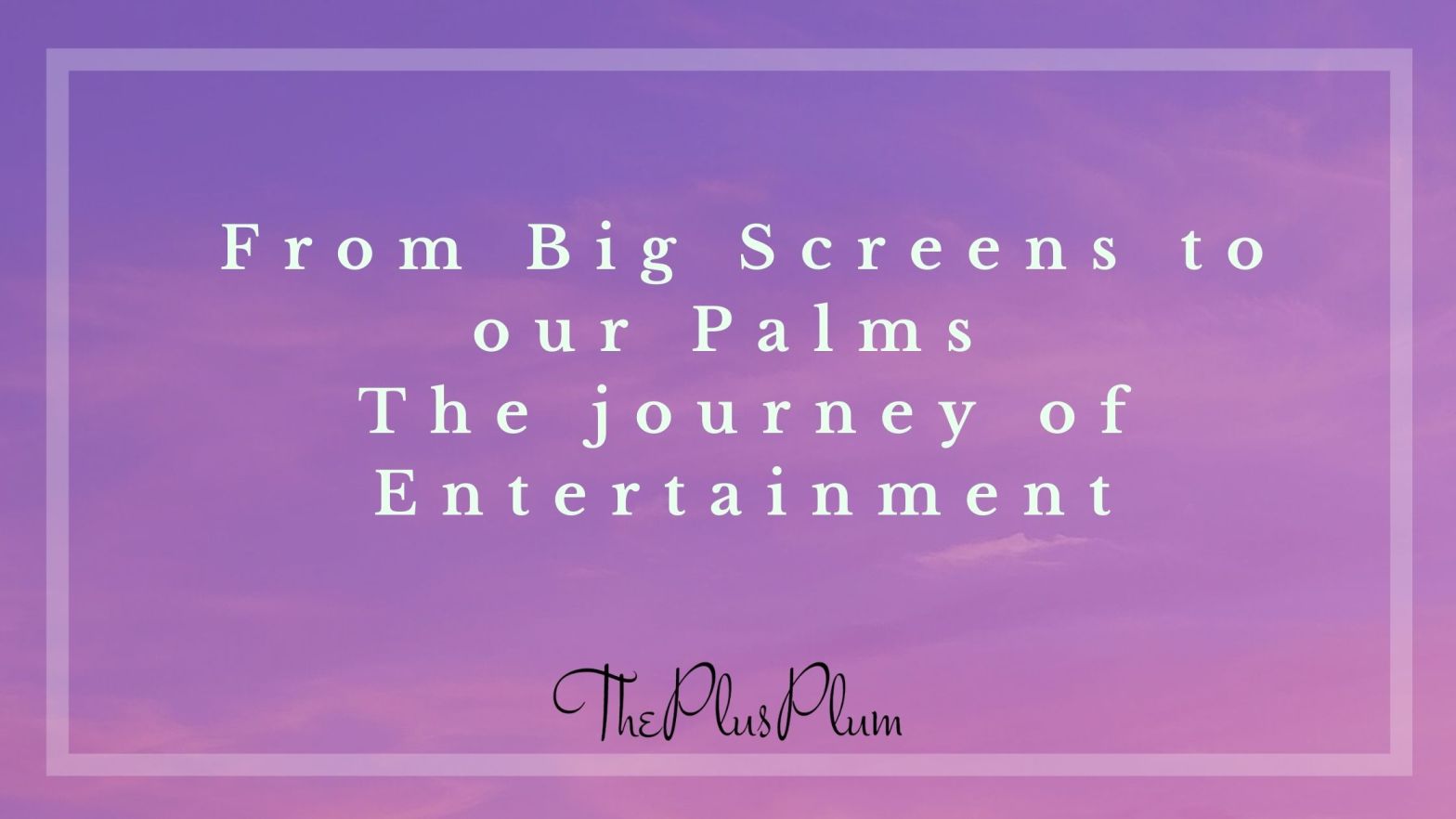The entertainment sector has seen massive advancement in technology for the past twenty to thirty years and it has changed the way we consume content. From cable TVs, to illegal CDs (Compact Discs), to DTHs (Direct To Home) and OTT (Over-the-top) and stand-alone cinemas to multiplexes, there have been many radical shifts.
Retrospecting a couple of decades ago, when Kyunki Saas Bhi Kabhi Bahu Thi was one of the top watched soap operas in Indian households and when going to the theatres to watch a newly released movie involved not just prior planning but also ended up being a lot of fun with ice-creams and chicken puffs (Popcorns weren’t a trend back then!)
The Internet was not something that everyone had access to or even knew how to use. It was expensive and slow which are mostly the reasons why it did not have a wider usage base.
Those were the times when serials were watched according to their airing time on TV and not as per our convenience (we call it “appointment-viewing”), when all members of the family had to watch the same thing on TV together, instead of being able to watch what they wanted to watch individually.
Over the years, we were introduced to concepts of what we at Fanatisch term as “Expensive Cinema” i.e PVRs, Multiplexes & Cineplexes, that came into existence with their exorbitant ticket prices, huge-ass screens, spacious seats and mega buckets of popcorn.
These luxurious theaters probably burnt holes in many pockets for almost a decade before they were challenged by Over-the-top (OTT) apps/online streaming platforms, online mobile games and mobile TVs.

If cable television killed Doordarshan, it won’t be wrong to say the Internet killed cable television and it is now eyeing cinema houses.
Gone are the days when mobile was limited to calling purposes. About ten years ago, the concept of mobile entertainment was limited only to such aspects as wallpapers, ringtones and small videos, which could be shared with close associates.
The generation of smartphones and the successive entry of tablets resulted in a major shift in content consumption and mobile user behavior. Streaming media and video services, mobile TV and games etc, have re-defined digital entertainment ushering in a fresh experience for mobile users. The result is an unparalleled shot in mobile content availability and consumption.

The introduction of 4G followed by the emergence of Jio, allowed usage of high-speed internet at a fraction of previous prices. Thus, increasing the demand for Internet as well as accelerating app downloads and content consumption which in-turn increased the average viewing times on phones.
According to April 2019 data, the global mobile population amounted to 4 billion unique users. As of February 2019, mobile devices accounted for 48 percent of web page views worldwide, with mobile-first markets such as Asia and Africa leading the pack. Nigeria registered the highest rate of internet traffic coming from mobile devices; followed by India, Ghana, and Kenya.
The popularity of various OTT channels like Netflix, Amazon Prime, Disney+Hotstar, Voot & YouTube has resulted in a decline in traditional TV and movie theatres. These mediums have various advantages – all new movies that are released are available on these apps within months of theatrical release, the shows can be accessed and watched anytime anywhere as per one’s own convenience, the subscription of these channels is less than half the amount paid for cable subscriptions.

The Web is providing content that’s fresh, but the same can’t be said about TV and Bollywood.


These OTT channels not only provide access to existing channels and programmes,but have also produced their own series such as Netflix’s critically acclaimed series Money Heist and Amazon Prime’s famous series Mirzapur.
These series are on a completely different tangent than the stories viewed on TVs. Shows like TVF & AIB have brought a huge change in the landscape of Indian soap operas and reality shows.
With online becoming the most popular trend in the past couple of years, Bollywood figures like Vikram Bhatt, Vikramaditya Motwane, Zoya Akhtar, Saif Ali Khan, Farhan Akhtar, Richa Chadda, Rajkummar Rao, Nawazuddin Siddiqui and Sujoy Ghosh are some popular names who are seen producing, directing or acting in a Web series’ for different OTT channels, instead of the popular Khans and Kapoors. With the creation of content that’s localised, helps the shows remain relevant, relatable and eventually widens audience reach. Innovation in content creation is what these mediums are aiming for.
Whether stuck in traffic, riding the metro or lazing at home, the availability of quality content at the click of a button is what’s driving the online revolution.
These developments haven’t been missed by brands globally, who have come to realise that mobiles are major distribution channels for content, with a wide reach. With mobiles now being used by companies to market their products, various creative branded entertainments are coming to the fore and are promoted on integrated omni channels, not just making the brand visible on varied media, but also the seamless integration helps in making impromptu sales. Thousands of apps are being developed regularly focusing on a variety of aspects like entertainment, gaming, music, e-retailing etc.
Mobility is the present of entertainment. As the technology evolves further and everything slowly becomes available online, we will see an upsurge in mobile content consumption particularly the video-rich services and mobile TV. Newer technologies like Augmented Reality, Mobile Peer to Peer (P2P), Near Field Communications (NFC), 3D in mobile etc.,are gaining traction to make entertainment services richer and engaging. Mobile entertainment, which is a luxury for a large part, is where the audience and money is available.
Technology always evolves, you can’t be selling CDs and cassettes today.
Go digital and see your Brand zoom ahead!

